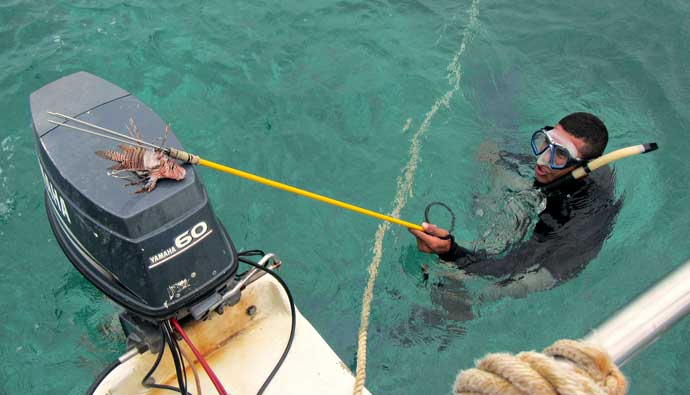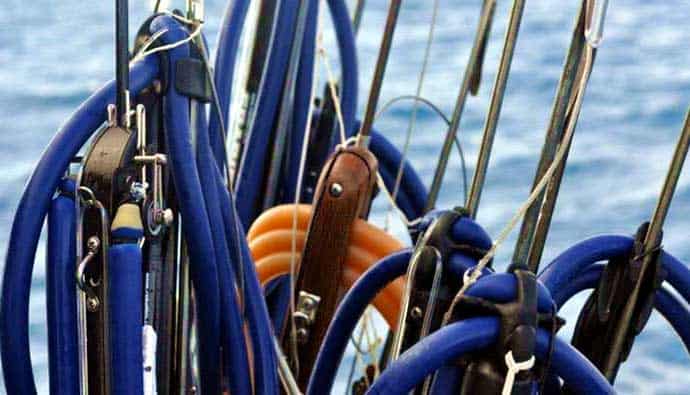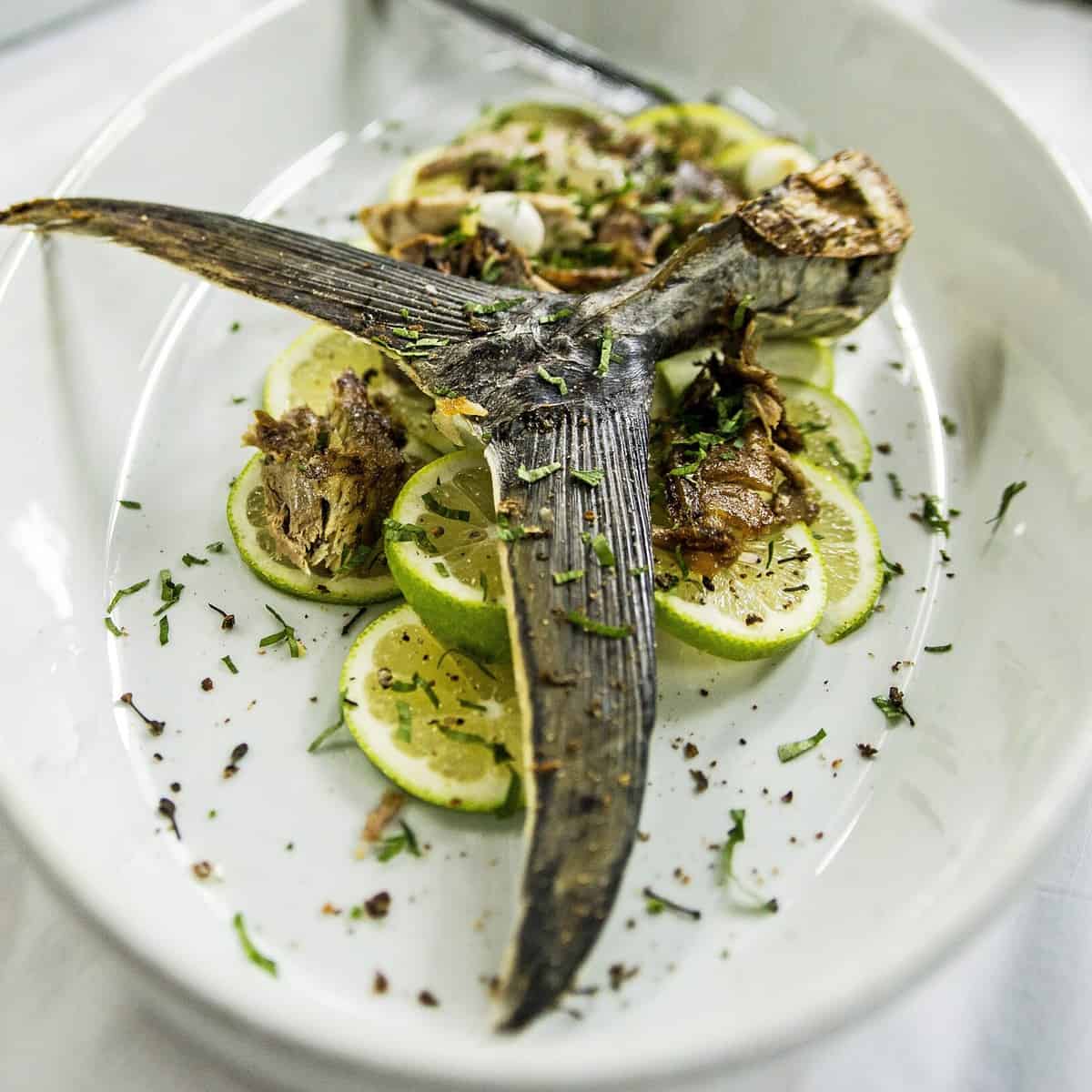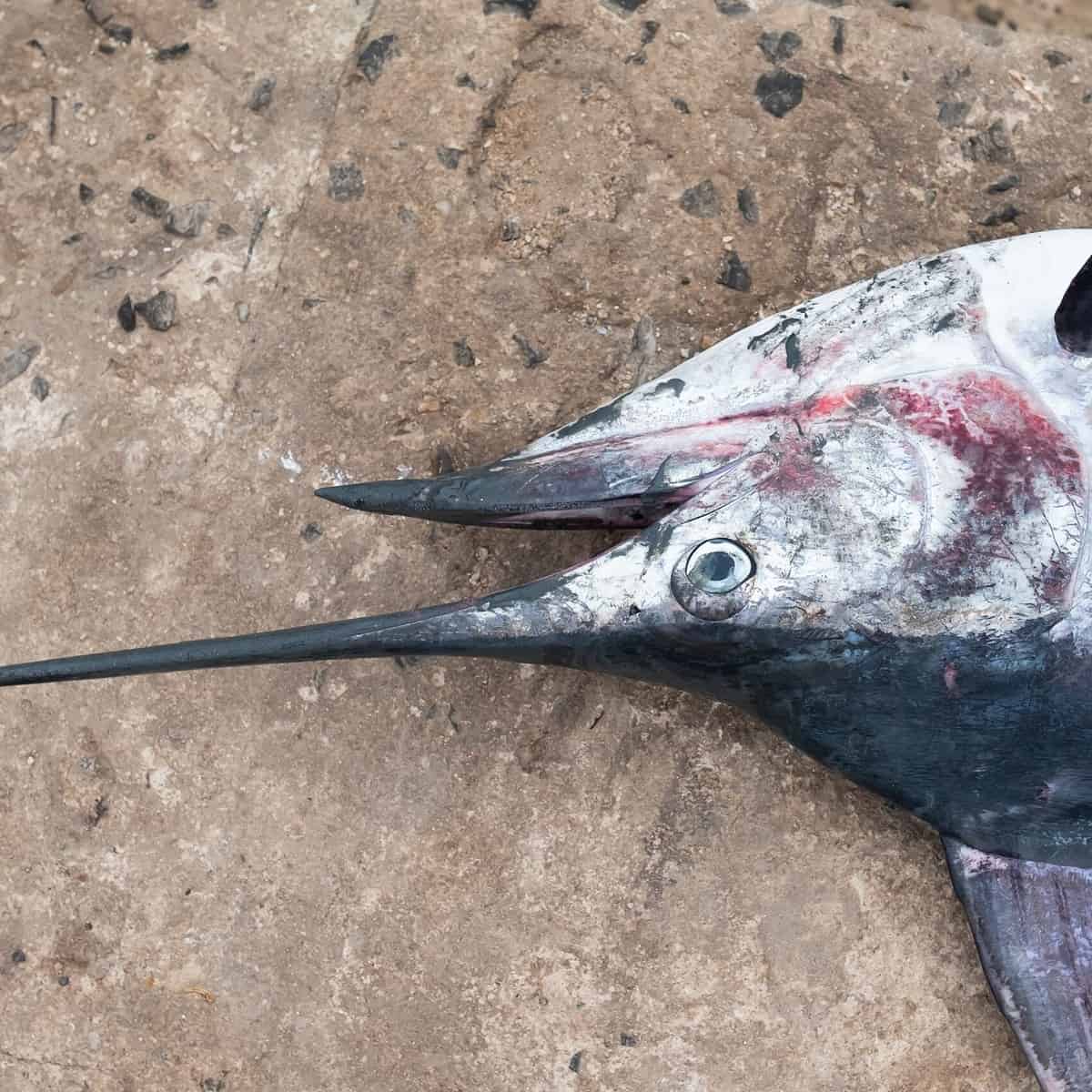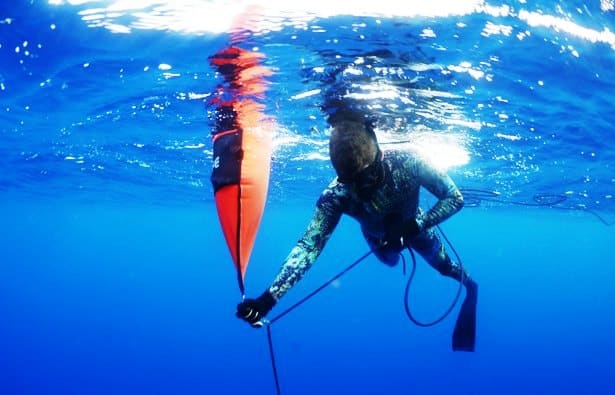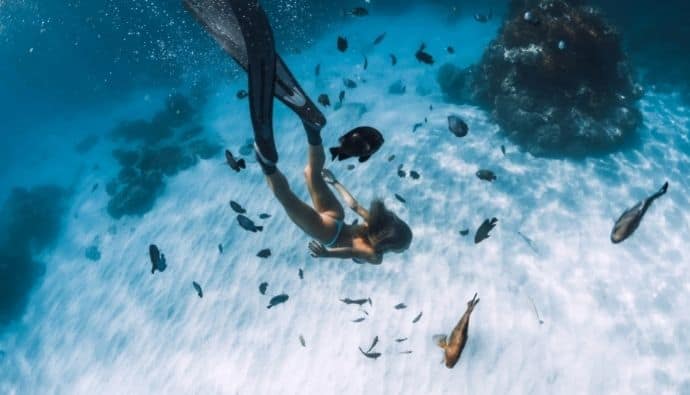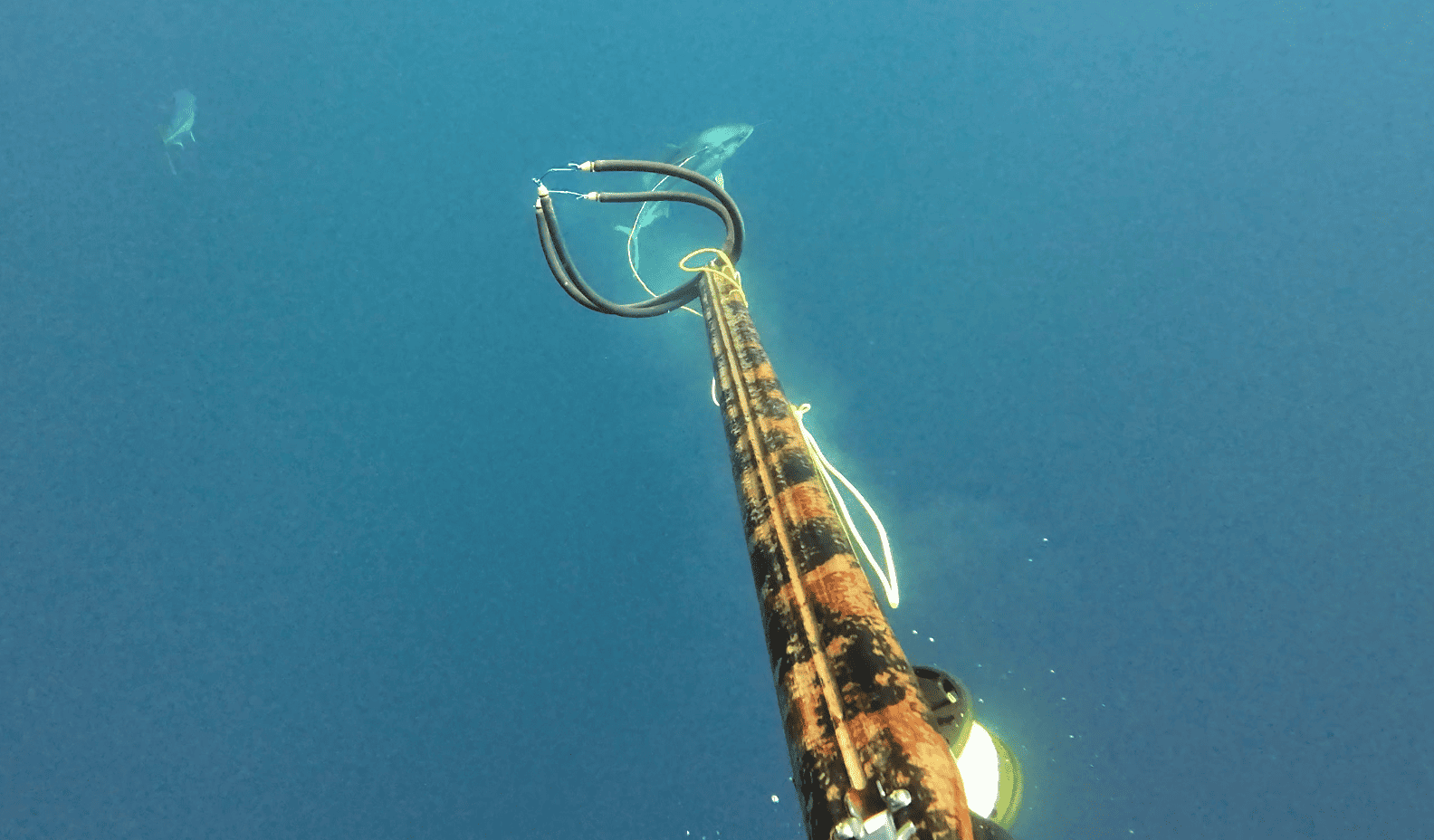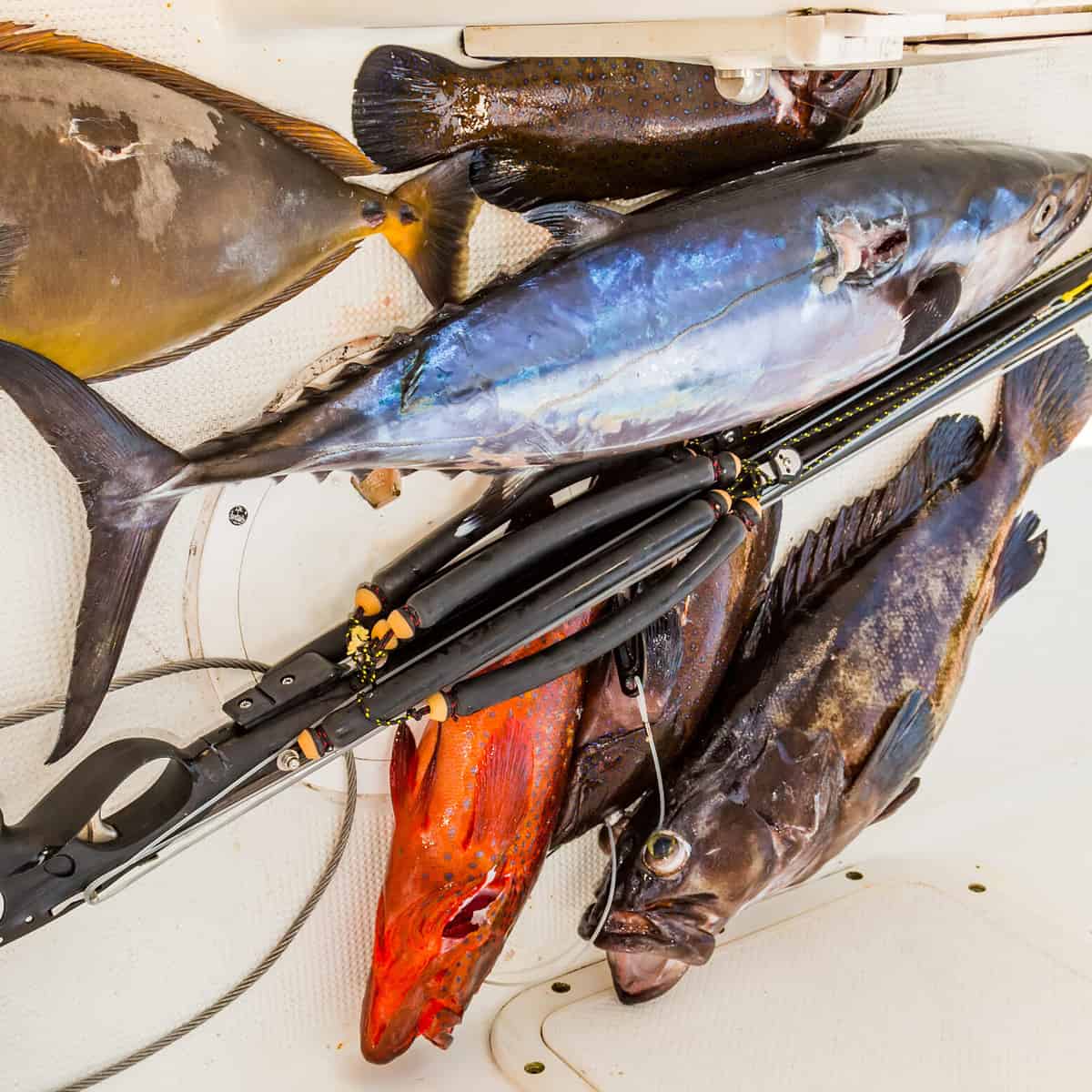One of the first questions any spearo gets is “is spearfishing dangerous?”
In fact, every time I pack my wetsuit and rack up my speargun, I can tell my wife has some reservations about the whole ordeal. “Who’s your dive buddy today? Are they experienced? What are the conditions like? Are you gonna run some safety drills?” are all questions that are on the docket.
Although a fresh ahi slab is more than enough to make the risk worth it for her in the end, her concerns aren’t without warrant.
Spearfishing Magazine reports 8,000 deaths by drowning in the USA per year, most of them (81%, in fact) in the prime spearfishing demographic of males between the ages 14-32.
Aside from shallow water blackouts, divers are subject to harassment by other aquatic predators like seals or sharks and are at the mercy of ocean conditions. However, with some experience, every diver can manage all of these risks safely and return to shore with their catch in tow.
This Cast and Spear article on spearfishing danger and safety aims to give you some peace of mind in facing the dangers present in the ocean and diving safely.
We’ll list out the danger, give you an idea of why you should keep these in mind, and explain how to navigate the risk.

Poor Surface Conditions
Surface conditions usually encompass swell, wind, and inclement weather such as rain.
Swell
Swell, in a word, is the waves on the surface of the water that you’re in. Some people handle being in swell better than others; those who are prone to seasickness will often find themselves chumming the water within a few minutes of being in a swell.
Other than the tumult of the surface causing nausea, swell also poses a danger as it can move divers further than they account for with the ambient current.
High swell environments often cause divers to blow past their intended diving or hunting routes and overshoot their exits, and, in the case of shore diving, poses a danger of pushing divers into hazards like reefs or hard shorelines (think waves crashing into a cliffside or sharp rocky shore).
Swell also can separate divers from buddies, and make locating one another difficult as it often protrudes over the eye level of divers on the surface.
How to mitigate the danger:
Don’t go out if the swell is too heavy to bear. Personal risk tolerance will dictate what feels right for you, but in general – if in doubt, don’t go out.
If you are out in swell, ensure that you’re close to your buddy at the surface and keep eye on them while in the water. Give yourself a little bit more breathing room from hazards than you might deem normal.
Wind
Wind, especially when paired with a swell, can cause serious issues at the surface. Strong winds whip swell into white caps, causing poor visibility both at the surface and underwater.
Wind also can cause divers to overshoot or stray from their planned hunting route, causing disorientation and discomfort.
How to mitigate the danger:
Again, don’t go out in high gale force winds. If you do happen to be out while the wind is picking up, stay close to your buddy (ideally within arms reach when surfacing).
If the wind starts to go against the tide or current direction causing white caps, it’s highly recommended to get back to shore as visibility will deteriorate rapidly.
Inclement Weather
Usually found as rain, inclement weather also includes hail, snow, sleet, and other such weather phenomena. Such weather will often cause poor visibility due to the water salinity being variable throughout the water column.
Any weather phenomena that causes freshwater runoff into the sea from land also poses the hazard of silt and dirt causing extremely poor visibility. It’s also important to note that when the weather changes the environment so drastically, wildlife does as well.
Marine predators like sharks and seals often take advantage of the poor visibility to be more aggressive in hunting for food.
How to mitigate the danger:
Follow all inclement weather advisories put out by local authorities in relation to storm and flood advisories.
Pay particular attention to any brown water advisories as they are a sure indicator of poor visibility and a terrible day in the water.
Poor Underwater Conditions
Poor underwater conditions usually consist of poor visibility and strong currents.
Poor visibility
Poor visibility (or ‘viz’) is a common challenge to many spearos, particularly those who aren’t blessed to live in clear water environments such as Hawaii or Florida.
As mentioned before, visibility can be influenced by surface conditions such as wind churn or inclement weather, as well as undercurrents.
What you consider to be “good” visibility is subjective to the diver and norms of the local area – in Hawaii, anything under 40’ viz would be considered milky, and in California, the same viz would be considered nearly tropical!
It’s important to note that visibility norms will affect the wildlife in the area; your prey might be comfortable in 40’ viz, but change their behavior dramatically in 20’ viz. Plan accordingly.
How to mitigate the danger:
In poor visibility conditions, it’s best practice to dive in a place that you are familiar with. Unless you’re extremely confident in the water and in your general ecosystem, diving into a new spot with poor visibility conditions is generally unfruitful and discouraged.
After all, without good visibility, you probably won’t be able to spot the best structure to hunt and hide behind and have trouble knowing what species to target.
Take extra precaution in your dive with muzzle control and target acquisition – ensure that your prey is in fact your prey and not a bycatch, or even a buddy.
Additionally, since you’re less able to orient yourself along your dive route by underwater structure, pay special attention to the shoreline or surface markers to keep yourself oriented in relation to your planned hunting path.
Strong Currents
Currents are vital to an ecosystem, and spearfishing wouldn’t be possible without them, as they carry nutrients throughout the ocean. However, strong currents are an incredibly dangerous hazard and should be taken note of before a dive.
Currents can mess with your aspetto diving by blowing you out of cover or dragging you against the reef causing injury. When close to the shoreline, currents, and swell can push you very quickly in and out of the white water and onto rocks, posing a grave threat to any diver.
Currents also can blow you off of your planned descent, putting you at the bottom at a different place than you had planned for, and also throw you off the course of your planned diving route.
How to mitigate the danger:
Again, if currents are visible from the surface and you feel unsure, don’t go out at all. Many spots also have a predictable current that is known by other divers – check out local spearo groups and ask about specific areas.
For example, the island of Maui has a strong current around it locally dubbed the “Molokai Express”; if you get caught in it you’ll end up on another island.
Constantly check your position relative to the shoreline, surface markers, and underwater structure. In strong current conditions, it’s not uncommon to be blown way off course, or sucked out to sea.
Take special note of this after doing something that would take your attention away from your surroundings, such as reloading your gun or cleaning/stringing your fish.
Marine Wildlife (Hazards and Predators)
Although we are all out there hunting for specific species of wildlife for the dinner table, there are also others that pose a threat to our safety and comfort.
On the hazard side, there are animals that are in general dangerous to touch. For many spearos, the sea urchin comes to mind. Many divers have been pricked by a sea urchin while trying to harvest a lobster in the dead of night, or when trying to stabilize against the current by grabbing the reef.
Some fish species are also dangerous even when speared and struggling.
Fish like lionfish or certain species of squirrelfish have sharp, venomous spines that can hurt for days on end, and fish like barracuda have razor sharp teeth that can easily cut through the neoprene or even kevlar gloves if you aren’t careful.
I’ve even personally gotten a really bad cut from a parrotfish, of all species because I grabbed it through the gill plates without gloves (never do that).
Predator-wise, be aware of what predators you might find in the ocean. Sharks and seals are the biggest culprits of stringer picking and spearo bullying.
It can be a bit difficult to gauge what is wise – after all, these predators are going after the same things you are (delicious, delicious fish!) and some sightings of them can be a great sign that the zone you are hunting is actually quite productive.
However, if the predators are getting more aggressive (seals getting closer, sharks flaring their fins in the mid-column of the water), it might be time to move to a different zone or just bail on your dive entirely. Shark attacks are rare, but still a consideration.
How to mitigate the danger:
With hazards, the best practice is first, awareness, and second, gear. For example, do your best to take note of sea urchin clusters at your chosen bottom spot before you descend.
In terms of gear, make sure that you are wearing a proper wetsuit (or at least a lycra skin) to prevent reef scratches, and a pair of cut-resistant kevlar gloves will do wonders for handling fish.
With predators, you need to first accept that you will eventually see sharks and seals, and deal with the fear you might face.
Fear will cloud your decision-making skills and ultimately work against you. The best practice when you do see them is just to monitor their behavior.
If a lone shark or seal just cruises through without giving you a second look, there’s no need to panic.
However, be aware that the sound of a struggling fish against a structure or wriggling on a shaft is nearly irresistible to all predators, and you should aim to get your catch under control as soon as possible in order to prevent any potential predator interaction.
Under no circumstances should you freely give away your catch. Giving your catch away without at least some resistance is effectively the same as feeding the predators.
They will, in turn, learn that they may be able to bully other spearos and get a free meal – in these instances, there are many cases of learned behavior that ultimately lead to higher predator aggression, and the culling of said predator.
To protect yourself, other divers as well as the keystone apex predators, you should do your best to protect your catch.
Shallow Water Blackout (and other LMC events)
Shallow water blackouts as well as LMC (loss of motor control) events are the most dangerous aspect of spearfishing, claiming the majority of spearfishing and freediving-related deaths.
This is by far and away the most important aspect of spearfishing to do safely, and a small amount of prevention will pay off a thousandfold if you never have to deal with SWB or LMC.
SWB and LMC are the end result of hypoxia (oxygen deprivation), and a small amount of prior training and proper technique can greatly mitigate your risk.
How to mitigate the danger:
Here’s a list to make it as clear as possible:
- Buddy up! When deep diving together, stick together and adhere to one diver up and one diver down, and have each other’s backs. It’s actually more dangerous to be diving with a diving partner and not actually follow each other, because you’ll be lured into a false sense of security.
- If possible, gain some experience in a formalized instruction setting such as an FII Level 1 course – the same goes for your buddy. You’ll gain valuable insight into breathing techniques, diving techniques, and general safety.
- Adhere to a solid amount of surface interval between dives – the minimum needed is at least double your time holding your breath (for example, with a 2-minute breath hold, it’s recommended that you stay at the surface for at least 4 minutes).
- Do not push yourself if you’re not completely comfortable. If your buddy has less capacity than you, definitely don’t push yourself. If you’re hunting in a new area that you’re not familiar with, definitely don’t push yourself. No fish is ever worth your or your buddies’ lives.
Yourself and Other Divers
Lastly, there are a few horror stories of hunting equipment being used improperly leading to serious injury.
It’s helpful to remind yourself that spearguns use extreme physical force to launch a projectile several meters underwater to pierce a living organism – and it’s best practice to ensure that you’re not the organism that ends up there.
To give you a small rundown of best practices to protect yourself and other divers:
- Practice muzzle discipline – don’t point your speargun at anything you’re not willing to spear. When swimming with your gun, keep your gun to your side and either pointed it to the front of you to minimize drag, or down and away for maximum safety.
- Do not load your gun out of the water. Spearguns are designed for shooting in the water and are highly prone to a catastrophic failure that could lead to an injury outside of the water.
- Ensure target acquisition – make sure that whatever you’re about to shoot is, indeed, a fish, and furthermore, the correct species of fish. This goes doubly when visibility is poor.
- Unload your guns as you return to shore or dive boat. Most captains will designate a radius around their boat where they want guns to be unloaded; adhere to it!
- Designate a hunting path with your dive buddies. Having everyone aware of the route is important in case someone gets separated, and gives a sense of direction and orientation for divers.
- Watch your lines. Your gun line can easily become tangled in fighting a fish or around coral and should be taken into account in order to not get tangled up. You should always have a dive knife in hand in order to cut any tangled lines in an emergency.
Conclusion
All in all, spearfishing is in fact a dangerous activity with a number of hazards. Number one is SWB or other hypoxic events, among other things like predators and hazardous conditions.
However, all dangers can be mitigated or avoided entirely with some know-how. Pass this article to your buddy so you can all get on the same page. Happy hunting!




 Facebook
Facebook YouTube
YouTube
